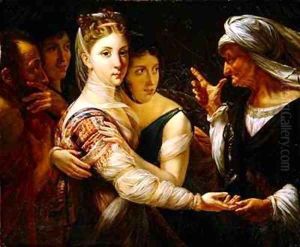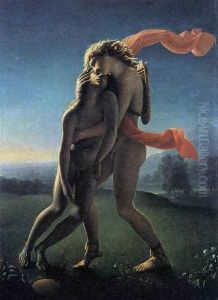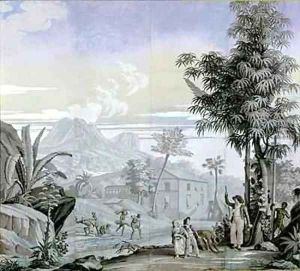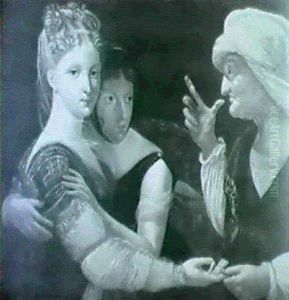Jean Broc Paintings
Jean Broc was a French artist born on May 20, 1771, in Limoges. He was a part of the early 19th-century Neoclassical movement, which was characterized by an interest in the art and culture of ancient Greece and Rome. Broc was a student of the famous painter Jacques-Louis David, who was a dominant figure in French painting at the time and a strong proponent of the Neoclassical style.
During his training under David, Broc would have been exposed to rigorous academic methods, learning to draw from casts of ancient sculpture before progressing to live models. This education was designed to inculcate a mastery of classical forms and a precise, linear technique. Broc's works often reflected these influences, with a strong emphasis on clarity of form and composition.
Despite his education and the prominence of his teacher, Jean Broc never achieved the same level of fame as some of his contemporaries, such as Jean-Auguste-Dominique Ingres or Antoine-Jean Gros. His career unfolded during a turbulent period in French history, spanning the French Revolution, the rise and fall of Napoleon, and the restoration of the Bourbon monarchy. These events would have impacted the themes and opportunities available to artists of his generation.
One of his notable works is 'The Death of Hyacinth' from 1801, which depicts the mythological story of Hyacinth, a young lover of the god Apollo, who is accidentally killed. In this painting, Broc used a classical story to explore themes of beauty, tragedy, and the ephemeral nature of life, which were common in Neoclassical art.
Broc's later years saw a decline in his artistic output and his death occurred on March 17, 1850, in Limoges. While not as well-remembered as some of his peers, Jean Broc's work remains a testament to the Neoclassical movement and its impact on the course of French art history.



